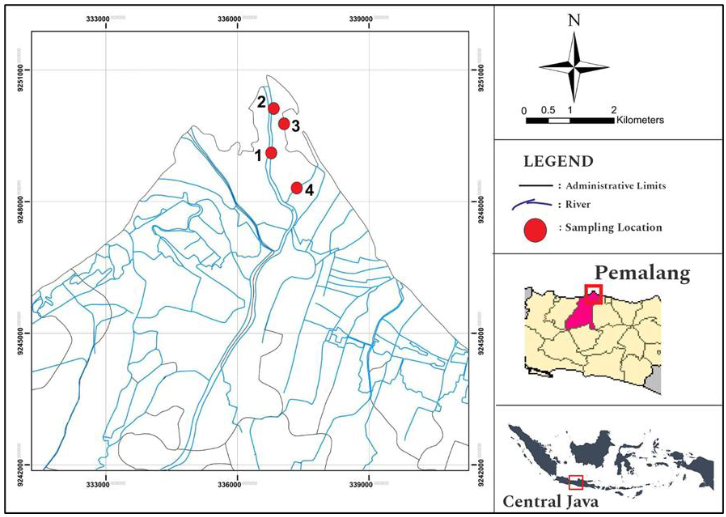Mangrove forests are not just trees by the sea—they’re natural fortresses that protect coastlines from erosion, provide homes for marine life, and even have ecotourism potential. Unfortunately, these fortresses are weakening in Mojo Village, Ulujami District, Pemalang Regency, Central Java.
A recent study reveals the alarming condition of mangroves in this area. Researchers from Jenderal Soedirman University and the National Research and Innovation Agency (BRIN) found that Mojo’s mangrove forests are under severe pressure from coastal abrasion, land-use change, river sedimentation, and trash buildup. Since 1999, around 200 hectares of Mojo’s coastline have vanished due to erosion.
Who Thrives and Who Struggles?
The study found that the species Avicennia alba dominates across all stages of growth—from seedlings to mature trees. However, there’s a concerning detail: while mature mangroves show relatively high diversity, the seedling stage has almost no variety. This means that natural regeneration is seriously lacking.
Other species like Rhizophora mucronata and Sonneratia caseolaris are present but less competitive during early growth. This indicates a major issue in the regeneration phase, which could threaten the forest’s long-term sustainability.
A Less Friendly Environment
Environmental factors like water temperature, salinity, pH, and dissolved oxygen also play a role. While temperature and salinity levels are still within the ideal range, acidic pH levels and inconsistent oxygen levels point to poor conditions for mangrove seedling growth. In some areas, boat traffic further disrupts the ecosystem.
What Can Be Done?
Researchers emphasize the need for immediate conservation efforts. Some recommended actions include:
-
Controlling sedimentation from nearby rivers
-
Improving water quality
-
Protecting seedlings and young mangroves from damage
-
Developing the area to support both ecotourism and conservation
In summary? Mojo’s mangrove forest is a coastal guardian in distress. With the right intervention, it can be restored to continue protecting the shoreline and supporting the local community.
Reference
Fajar Kartika, A., Fikriyya, N., & Nurul Zulkarnaen, R. (2024). Vegetation diversity in mangrove forest area of mojo village, Ulujami district, Pemalang regency, Central Java. Buitenzorg: Journal of Tropical Science, 1(2), 1–9. https://doi.org/10.70158/buitenzorg.v1i2.8


